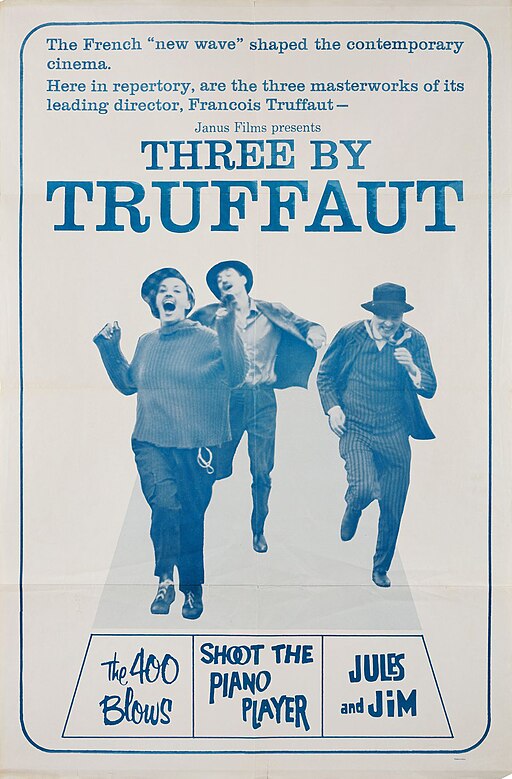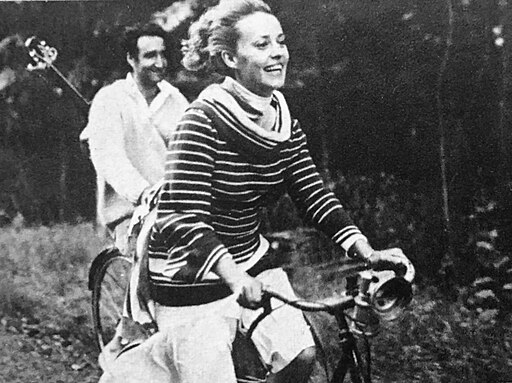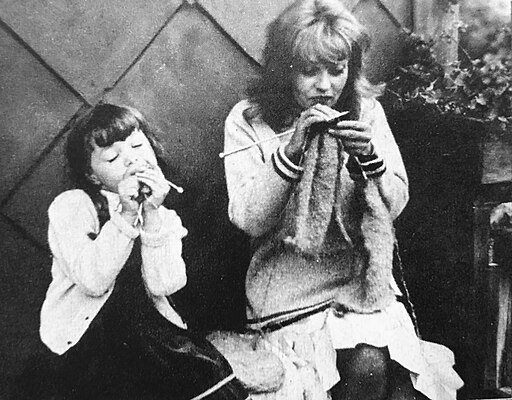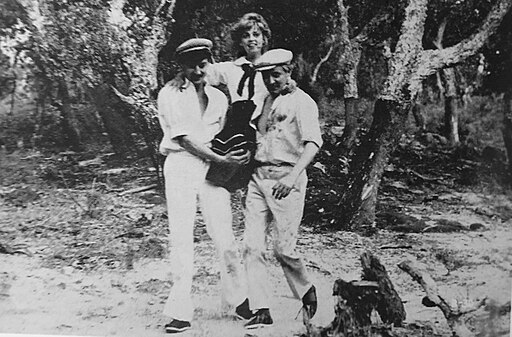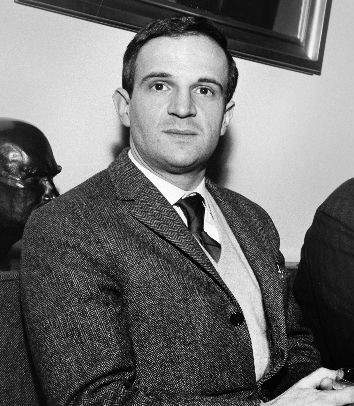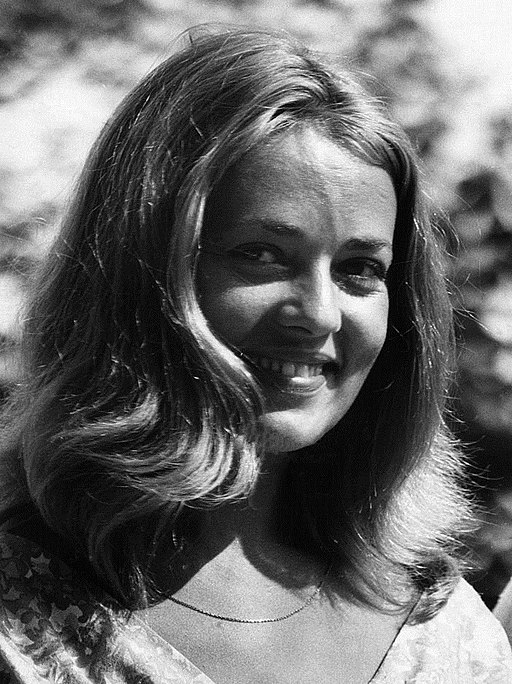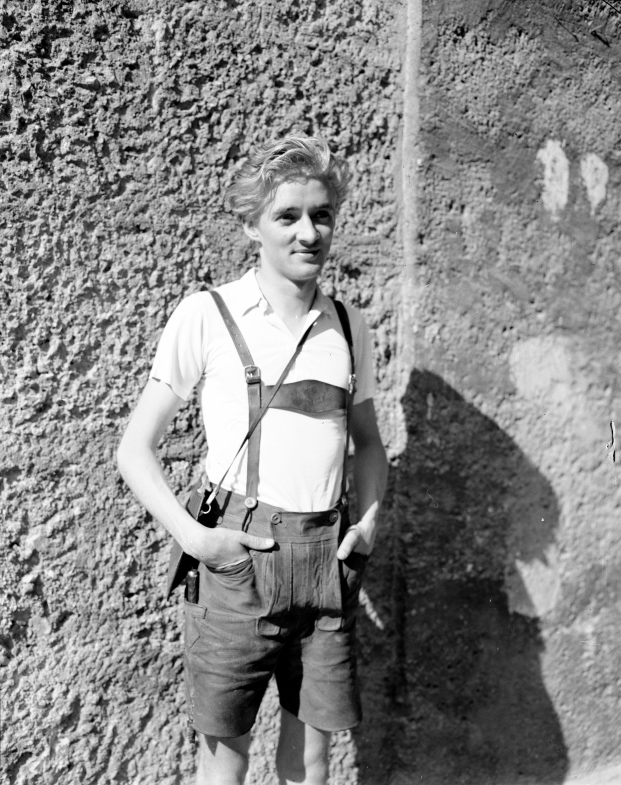Jules and Jim - 1962
back| Released by | Cocinor |
| Director | François Truffaut |
| Producer | Marcel Berbert - François Truffaut |
| Script | François Truffaut (screenplay), based on the novel by Henri-Pierre Roché |
| Cinematography | Raoul Coutard |
| Music by | Georges Delerue |
| Running time | 105 minutes |
| Film budget | $ 25.000,- |
| Box office sales | $ 68.000,- |
| Main cast | Jeanne Moreau - Oskar Werner - Henri Serre |
Jules and Jim
A Poetic Exploration of Love, Friendship and Freedom
"Jules and Jim" (1962), directed by François Truffaut, follows the profound friendship between Jules, an Austrian writer, and Jim, a French bohemian, as they both fall for the enigmatic Catherine.
Truffaut’s innovative direction, characterized by dynamic cinematography and narrative techniques, along with Jeanne Moreau’s captivating performance, solidifies the film as a cornerstone of the French New Wave. Its exploration of non-conventional relationships and emotional depth had a lasting impact on cinema, influencing storytelling and visual style in subsequent films. "Jules and Jim" remains a timeless study of human relationships and the quest for personal freedom.
Related
Jules and Jim – 1962
Summary and Analysis
"Jules and Jim" is a story of friendship, love, and the complexities of human relationships set against the backdrop of early 20th-century Europe. The film spans several decades, exploring the lives of its main characters as they navigate love, war, and the passage of time.
Plot Summary:
The film begins in Paris in 1912, where Jules, a shy Austrian writer, and Jim, a French bohemian, form a deep and enduring friendship. They share a love of art, literature, and the bohemian lifestyle, spending their days discussing philosophy and their nights exploring the vibrant Parisian nightlife.
Their friendship is put to the test when they meet Catherine, a free-spirited and enigmatic woman who captivates both men. Jules falls in love with Catherine, and she reciprocates his feelings. Despite his own feelings for her, Jim steps aside out of loyalty to his friend. Jules and Catherine eventually marry and move to a secluded cottage in the French countryside.
The outbreak of World War I separates the friends, with Jules and Jim fighting on opposite sides. After the war, Jim visits Jules and Catherine, finding their marriage strained. Catherine is restless and unfaithful, and Jules, deeply in love with her, endures her whims with patience and resignation.
Jim and Catherine rekindle their romance, with Jules’ reluctant acceptance. The trio attempts to form an unconventional family unit, but the arrangement is fraught with jealousy and instability. Catherine's erratic behavior and desire for freedom make it impossible for her to settle into any traditional role.
The film's climax is tragic. Catherine, unable to resolve her conflicting desires, takes a desperate and fatal action. She drives a car off a bridge with Jim beside her, killing them both. Jules, left alone, reflects on the profound yet tumultuous relationships that defined his life.
Analysis
"Jules and Jim" is a masterful exploration of the themes of love, freedom, and the passage of time. Truffaut's direction, along with Raoul Coutard's cinematography, creates a film that is both visually and emotionally compelling.
Themes:
- Love and Friendship: The central theme of "Jules and Jim" is the interplay between love and friendship. Jules and Jim’s bond is tested by their mutual love for Catherine, but their friendship remains resilient, showcasing the strength and complexity of human connections.
- Freedom and Conformity: Catherine embodies the spirit of freedom and non-conformity. Her refusal to adhere to societal expectations and her pursuit of personal happiness, regardless of the consequences, challenges the traditional roles of women and relationships in early 20th-century Europe.
- The Passage of Time: The film spans several decades, reflecting on how time affects relationships and personal growth. The characters evolve, but their fundamental desires and conflicts remain, highlighting the enduring nature of human emotions.
Summary of "Jules and Jim":
Cinematography and Style:
Truffaut employs a variety of innovative techniques to tell the story, including freeze-frames, voice-over narration, and dynamic camera movements. Raoul Coutard’s cinematography captures the beauty of the French countryside and the vibrancy of Paris, enhancing the film's emotional depth.
Character Analysis:
- Jules: Representing stability and devotion, Jules’ character is defined by his unwavering love for Catherine. His patience and tolerance highlight the sacrifices often made in the name of love.
- Jim: Jim is the more adventurous and passionate of the two friends. His internal conflict between loyalty to Jules and his love for Catherine adds depth to his character, illustrating the complexities of human emotions.
- Catherine: As the film's most dynamic character, Catherine symbolizes the quest for freedom and individuality. Her unpredictable nature and refusal to be confined by societal norms make her both captivating and tragic.
Conclusion:
"Jules and Jim" is a poignant and beautifully crafted film that delves into the intricacies of love, friendship, and the human condition. François Truffaut’s direction, combined with stellar performances by Jeanne Moreau, Oskar Werner, and Henri Serre, creates a timeless masterpiece that continues to resonate with audiences. The film's exploration of the delicate balance between personal freedom and the bonds of love offers a profound commentary on the nature of human relationships.
Full Cast of “Jules and Jim”:
- Jeanne Moreau as Catherine
- Oskar Werner as Jules
- Henri Serre as Jim
- Vanna Urbino as Gilberte
- Serge Rezvani as Albert
- Anny Nelsen as Lucie
- Sabine Haudepin as Sabine, the child
- Marie Dubois as Thérèse
- Kate Noelle as Lucie, the friend
- Michel Subor as the narrator (voice)
- Christian Lude as Madame Girard
- Elisabeth Ronget as Hélène
- Dominique Lacarrière as Philippe
- Jean-Louis Richard as Jacques
- Pierre Fabre as Etienne
- Boris Bassiak as the German soldier
Analysis of François Truffaut’s Direction:
Innovative Storytelling: François Truffaut's direction in "Jules and Jim" is characterized by his innovative approach to storytelling. He blends narrative techniques that were groundbreaking at the time, using a mixture of voice-over narration, freeze-frames, and rapid editing to convey the passage of time and the emotional states of the characters. This dynamic storytelling style keeps the audience engaged and adds a lyrical quality to the film, making it feel almost like a visual poem.
Use of Cinematic Techniques: Truffaut collaborates closely with cinematographer Raoul Coutard to create a visually striking film. The use of natural lighting and location shooting enhances the authenticity of the story. Truffaut employs various camera techniques, including fluid tracking shots and handheld camera work, to create an intimate and immediate connection with the characters. One of the most iconic scenes is the freeze-frame of Catherine’s face, symbolizing her enigmatic and multifaceted nature.
Character Development: Truffaut's direction excels in character development. He draws out nuanced performances from his actors, particularly Jeanne Moreau as Catherine, Oskar Werner as Jules, and Henri Serre as Jim. Each character is given depth and complexity, making their relationships feel real and multifaceted. Truffaut's ability to elicit subtle emotional performances ensures that the characters' internal struggles and transformations are portrayed convincingly.
Thematic Exploration: Truffaut delves deep into themes of love, friendship, freedom, and the passage of time. He examines the fluidity of human relationships and the challenges of sustaining them. Through Catherine’s character, Truffaut explores the desire for personal freedom versus societal expectations, particularly regarding gender roles. The film’s portrayal of a ménage à trois challenges conventional ideas about love and fidelity, reflecting the changing social mores of the time.
Emotional Resonance: Truffaut's direction creates a film that is emotionally resonant and deeply affecting. He balances moments of joy and lightness with those of melancholy and tragedy. The emotional highs and lows of the characters' lives are portrayed with sensitivity and insight. Truffaut's personal touch is evident in the way he handles the film's tragic conclusion, which is both poignant and inevitable, underscoring the complexities of human desire and the often-painful consequences of pursuing it.
Aesthetic Choices: The aesthetic choices in "Jules and Jim" reflect Truffaut's background in the French New Wave movement. The film’s visual style is both elegant and innovative, with a strong emphasis on natural beauty and the use of real locations. The costumes, set designs, and use of color all contribute to the period atmosphere, while also serving to highlight the emotional states of the characters.
Music and Sound: Georges Delerue’s musical score, chosen by Truffaut, plays a crucial role in the film. The music complements the film’s mood, enhancing both its romantic and tragic elements. Truffaut’s use of sound is also noteworthy; the film's sound design is naturalistic, allowing the dialogue and ambient noises to create an immersive experience.
Cultural Impact: Truffaut's direction in "Jules and Jim" had a significant impact on cinema, influencing both contemporaries and future filmmakers. His willingness to break narrative conventions and his focus on character-driven stories helped pave the way for more personal and experimental films in the 1960s and beyond. Truffaut’s humanistic approach to storytelling, coupled with his technical innovations, cemented his place as a seminal figure in the history of cinema.
Emotional Performance of Jeanne Moreau:
Dynamic Characterization: Jeanne Moreau's portrayal of Catherine in "Jules and Jim" is a tour de force of dynamic characterization. Catherine is a complex character, embodying both captivating charm and capricious unpredictability. Moreau brings to life Catherine’s multifaceted personality with a performance that is both nuanced and vibrant. Her ability to convey a wide range of emotions—from passionate love to intense despair—creates a deeply compelling and authentic character.
Emotional Depth: Moreau's performance is marked by its emotional depth. She captures Catherine’s internal conflicts and desires with subtlety and precision. In scenes where Catherine expresses her longing for freedom and self-fulfillment, Moreau’s expressive eyes and nuanced facial expressions convey a profound sense of yearning. Her portrayal allows the audience to empathize with Catherine’s struggles, even when her actions are erratic or destructive.
Screen Presence: Jeanne Moreau’s screen presence is magnetic. From her first appearance, she commands attention with her natural charisma and enigmatic aura. Whether she is engaging in lively conversation, displaying spontaneous joy, or revealing moments of vulnerability, Moreau’s presence is captivating. Her ability to dominate the screen without overshadowing her co-stars speaks to her skill as an actress and her deep understanding of the character.
Subtlety and Nuance: Moreau excels in the subtle nuances of her performance. Her interactions with Jules (Oskar Werner) and Jim (Henri Serre) are layered with subtext, revealing the complexities of their relationships. In quieter, more introspective moments, Moreau’s restrained performance speaks volumes about Catherine’s inner turmoil and the conflicts between her desires and her reality. Her ability to convey so much with so little—often through a glance or a slight change in tone—demonstrates her mastery of the craft.
Chemistry with Co-stars: The chemistry between Jeanne Moreau and her co-stars is palpable and essential to the film’s success. Her interactions with Oskar Werner and Henri Serre are charged with emotional intensity and authenticity. Moreau’s ability to seamlessly switch between affection, jealousy, and camaraderie in her relationships with Jules and Jim adds depth to the love triangle at the heart of the story. The believability of these relationships is a testament to Moreau’s skill in building and maintaining complex character dynamics.
Range and Versatility: Throughout "Jules and Jim," Moreau showcases her versatility as an actress. She effortlessly navigates scenes that require humor, tenderness, seduction, and fury. Her performance is marked by a fearless willingness to explore the extremes of Catherine’s personality, making her both relatable and enigmatic. Moreau’s range allows her to fully inhabit Catherine’s character, making every scene she is in compelling and unpredictable.
Impact and Legacy: Jeanne Moreau’s performance in "Jules and Jim" has left an indelible mark on cinema. Her portrayal of Catherine is often cited as one of the greatest performances in film history. Moreau’s ability to bring such a complex and challenging character to life has influenced countless actresses and filmmakers. Her work in this film exemplifies the power of performance to elevate and deepen the emotional impact of a story.
Conclusion: Jeanne Moreau’s performance in "Jules and Jim" is a masterclass in acting. Her ability to convey the complexities of Catherine’s character with emotional depth, subtlety, and magnetic screen presence makes her performance unforgettable. Moreau’s portrayal not only anchors the film but also enhances its exploration of themes such as love, freedom, and the human condition. Her work in "Jules and Jim" remains a shining example of cinematic excellence and continues to resonate with audiences and critics alike.
Notable Quotes from the Movie:
- Catherine: "Jim, I love you, but I belong to myself."
This quote encapsulates Catherine’s independent spirit and her desire for personal freedom, which is a central theme in the film.
- Narrator: "They met in 1912. Jules was a writer from Austria, Jim was a Frenchman. They were inseparable."
This quote introduces the profound friendship between Jules and Jim, setting the stage for the complex relationships that unfold.
- Jules: "You said you loved me, but you don’t even know what love is."
Jules's confrontation with Catherine reflects the emotional turmoil and misunderstandings that plague their relationship.
- Jim: "I don't want to be one of those men who spends their life regretting the chances they didn't take."
Jim's declaration highlights his adventurous spirit and desire to live life without regrets, which drives many of his actions throughout the film.
- Catherine: "Do you love me? Do you love me not? He loves me... he loves me not."
This line, spoken by Catherine while plucking petals from a flower, symbolizes the uncertainty and capricious nature of her affections.
- Jules: "Catherine is not beautiful, but she is attractive."
Jules's observation about Catherine speaks to her unique charm and the magnetic effect she has on those around her.
- Catherine: "If I could see inside you, I’d see two voices in you. One says, 'Kill her.' The other says, 'Love her.'"
Catherine's insight into Jim's conflicted feelings towards her illustrates the deep emotional complexities of their relationship.
- Narrator: "For Jules and Jim, women were like kingdoms. They wanted to explore them all, to give them all up, and to have the satisfaction of having conquered them."
This quote from the narrator reflects the adventurous and sometimes cavalier attitude of Jules and Jim towards love and relationships.
- Jules: "Jim, if you love her, take her."
Jules's willingness to let Jim pursue Catherine, despite his own feelings, underscores the depth of his friendship with Jim and his complex relationship with Catherine.
- Catherine: "We were happy until that morning. But I remember the exact moment our happiness ended."
Catherine's reflection on the fleeting nature of happiness highlights the transient and fragile nature of their relationships.
Classic Scenes:
The Running Scene
Description: In one of the most famous scenes, Catherine (Jeanne Moreau) decides to dress up as a man, and she, Jules (Oskar Werner), and Jim (Henri Serre) engage in a spontaneous race across a bridge. The trio runs with childlike abandon, their happiness and carefree spirit evident.
Analysis: This scene is celebrated for its energy and playfulness, capturing the essence of the trio's friendship. The use of handheld cameras and quick cuts by cinematographer Raoul Coutard adds to the spontaneity and liveliness, making it a memorable and visually dynamic moment. It symbolizes the freedom and joy they experience together before the complexities of their relationships take a darker turn.
Catherine's Song ("Le Tourbillon de la Vie")
Description: Catherine sings "Le Tourbillon de la Vie" ("The Whirlwind of Life") in a café, accompanied by a guitar. The song narrates the ups and downs of life and love, reflecting the tumultuous relationships between the characters.
Analysis: Jeanne Moreau's performance in this scene is both charming and poignant. The song encapsulates the film's themes of love, change, and the passage of time. It also highlights Catherine’s magnetic personality and her influence on Jules and Jim. The simplicity of the setting, combined with the emotional weight of the lyrics, creates a powerful and intimate moment.
The Statue Scene
Description: Early in the film, Jules and Jim are fascinated by a statue they discover on a trip to a Greek island. The statue's enigmatic smile captivates them, and they use it as a symbol of ideal beauty and a benchmark for the women they meet.
Analysis: This scene sets the tone for the entire film, establishing the themes of idealized love and the pursuit of beauty. The statue represents the unattainable ideal that both men seek in their relationships with Catherine. The motif of the statue recurs throughout the film, underscoring the characters' ongoing quest for a perfect, yet ultimately elusive, love.
The Swings Scene
Description: Catherine, Jules, and Jim are at a park where they play on swings. Catherine's playful and carefree nature is on full display as she swings higher and higher, urging the men to join her.
Analysis: This scene is a visual representation of Catherine's free spirit and her influence over Jules and Jim. The carefree nature of the scene contrasts with the emotional complexities and conflicts that arise later in the film. Truffaut's direction here emphasizes the joy and innocence of their relationship at this stage.
The Final Scene
Description: The film's climax is a tragic and shocking scene where Catherine, driving a car with Jim as her passenger, deliberately drives off a bridge into the river, killing them both.
Analysis: The final scene is a culmination of the film’s exploration of love, freedom, and self-destruction. Catherine's dramatic and fatal act underscores her inability to reconcile her desires with reality. Truffaut handles this scene with stark realism, contrasting sharply with the earlier, more whimsical moments. It serves as a powerful and sobering conclusion to the narrative.
Catherine's Seduction of Jim
Description: In a pivotal scene, Catherine attempts to seduce Jim after a period of tension between them. She enters his room and disrobes, expressing her desire and vulnerability.
Analysis: This scene is intense and emotionally charged, showcasing Moreau’s ability to convey both strength and fragility. It highlights the complexity of Catherine's character—her need for love and validation, and her willingness to break social norms to achieve it. The raw emotion and honesty in this scene make it one of the most memorable in the film.
Awards and Recognition:
1962: Mar del Plata Film Festival
- Won: Best Director - François Truffaut
- Nominated: Best Film
1963: National Board of Review, USA
- Won: Best Foreign Language Film
1963: French Syndicate of Cinema Critics
- Won: Best Film
1963: Golden Globes, USA
- Nominated: Best Foreign-Language Foreign Film
1964: BAFTA Awards
- Nominated: Best Film from any Source
- Nominated: Best Foreign Actress - Jeanne Moreau
1964: Laurel Awards
- Nominated: Top Foreign Actress - Jeanne Moreau
1964: New York Film Critics Circle Awards
- Nominated: Best Foreign Language Film

